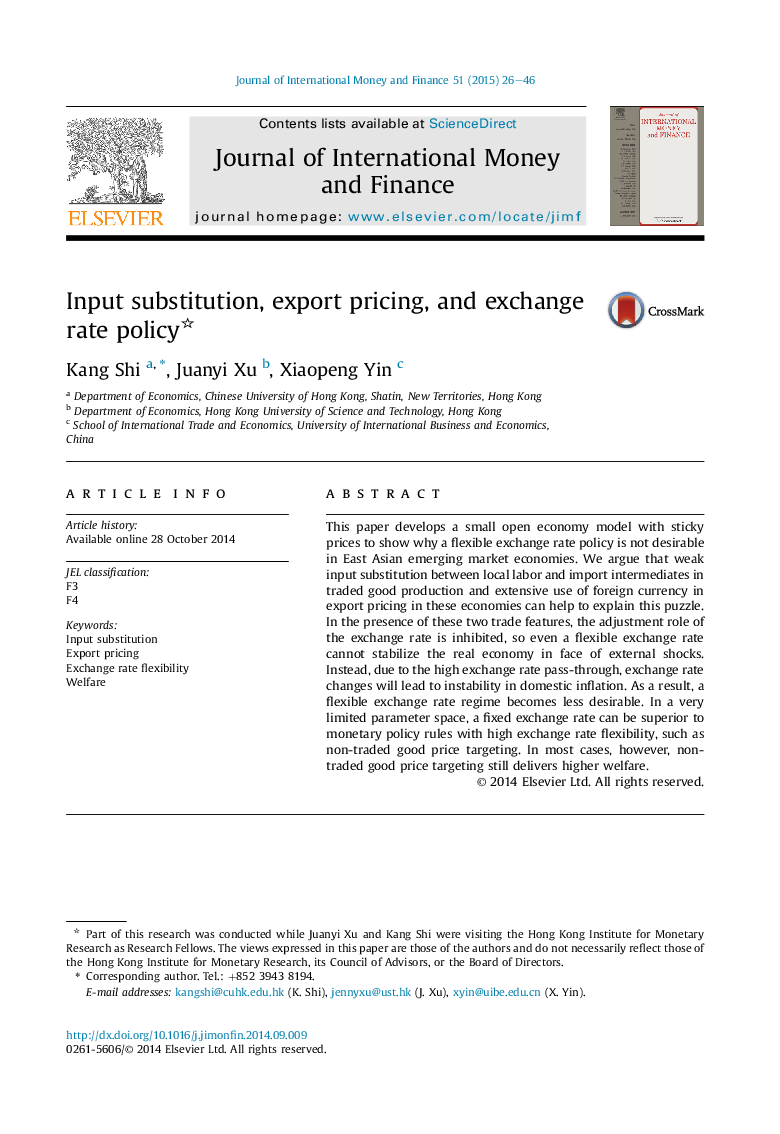| کد مقاله | کد نشریه | سال انتشار | مقاله انگلیسی | نسخه تمام متن |
|---|---|---|---|---|
| 963934 | 1479167 | 2015 | 21 صفحه PDF | دانلود رایگان |

• Low input substitution and wide use of external currency pricing reduce the desirability of flexible exchange rates.
• In the extreme case, a fixed exchange rate is superior to a flexible one.
• The results are robust when both external and internal shocks are considered.
This paper develops a small open economy model with sticky prices to show why a flexible exchange rate policy is not desirable in East Asian emerging market economies. We argue that weak input substitution between local labor and import intermediates in traded good production and extensive use of foreign currency in export pricing in these economies can help to explain this puzzle. In the presence of these two trade features, the adjustment role of the exchange rate is inhibited, so even a flexible exchange rate cannot stabilize the real economy in face of external shocks. Instead, due to the high exchange rate pass-through, exchange rate changes will lead to instability in domestic inflation. As a result, a flexible exchange rate regime becomes less desirable. In a very limited parameter space, a fixed exchange rate can be superior to monetary policy rules with high exchange rate flexibility, such as non-traded good price targeting. In most cases, however, non-traded good price targeting still delivers higher welfare.
Journal: Journal of International Money and Finance - Volume 51, March 2015, Pages 26–46